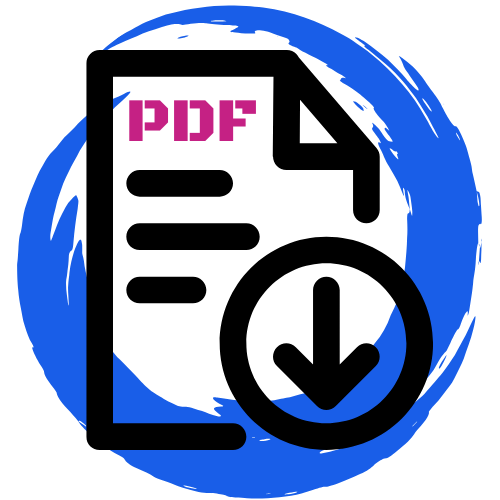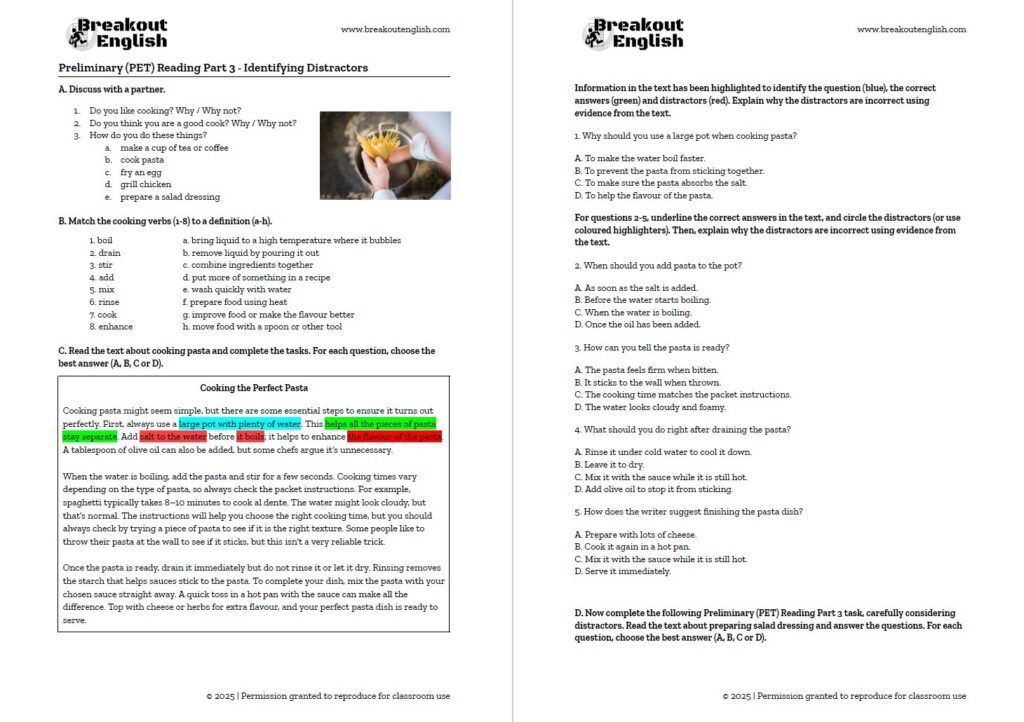Preliminary (PET) Reading Part 3 is a multiple-choice task that tests your ability to understand details, opinions, and implied meanings in short texts. A key feature of this task is the use of distractors — incorrect answer options designed to look right at first glance. Learning to spot and avoid these distractors is essential to improving your exam performance.
At the end of this post, you’ll find practice materials to help you train for PET Reading Part 3.

Contents
What is a Cambridge distractor?
A distractor is an incorrect answer option that seems plausible but does not fully match the information in the text. For Cambridge, distractors are carefully crafted to confuse test-takers who rely on surface-level reading or fail to pay attention to the details. They might:
- Use the same words as the text but in the wrong context
- Present information that is mentioned in the text but does not answer the question
- Sound logical but contradict details in the text
Exam candidates have a tendency to rush through reading tasks. Distractors take advantage of this by tricking you into choosing an answer that only half-answers the question, answers the opposite of what the question asks, or leads the reader to infer meaning from outside the text. Remember, only what is written in the text can be tested. Any pre-existing knowledge shouldn’t be used to answer the questions.
Distractors are used across all Cambridge exams at all levels in Reading and Listening papers. Why? Because they’ve found that distractors in comprehension questions force candidates to read more carefully, leading to higher levels of comprehension and a more reliable test of the candidate’s skills.
How does Cambridge use distractors in Reading Part 3?
Cambridge exams frequently include distractors in tasks that test your reading comprehension, and PET B1 Reading Part 3 is no exception. This part of the exam typically includes a short text (200–250 words) followed by five multiple-choice questions with four options each. Here’s how distractors are commonly used:
- Key words from the text: Distractors often include words or phrases directly from the text to make them appear correct.
- Partial truths: They include information that is true but irrelevant to the specific question.
- Opposites: They may present information that is the opposite of what the text says.
- Misleading logic: Some distractors rely on assumptions or logical-sounding answers that are unsupported by the text.
This means that choosing the correct answer often depends on careful reading and understanding, not just spotting familiar words.
Techniques to avoid being tricked by distractors
Understand the question fully. Before looking at the options, make sure you understand exactly what the question is asking. Underline key information which can help you find the right part of the text to focus on. Ask yourself: What specific information do I need to find?
Scan the text for clues. Locate the part of the text related to the question. Focus on sentences or sections that directly answer the question. Take the questions one by one and only think about one question at a time. There’s no need to fill your brain with five different questions all at once.
Analyse all answer options. Check each option carefully against the text. Don’t just look for matching words—think about the meaning. Cross out answers that don’t fully match the question.
Be wary of familiar words. If an answer option uses exact words from the text, double-check its context. It could be a distractor! Look for synonyms or paraphrasing in the correct answer.
Practice regularly. The more you practice, the better you’ll get at recognising common patterns in distractors.
The materials
Practice makes perfect when it comes to mastering Reading Part 3. Repeated exposure to longer reading texts helps build the stamina and skills needed to succeed in this part of the exam. The materials included here feature two full B1 reading tasks designed on the topic of cooking simple dishes to strengthen your comprehension and test-taking strategies. It would fit in well to any unit about food or as a stand-alone lesson.
One of these tasks specifically focuses on the concept of distractors, helping you learn how to identify and avoid them effectively. By working through these materials, you’ll gain the confidence and precision required to tackle distractors and make accurate choices under exam conditions.
Mastering Preliminary (PET) Reading Part 3 is all about understanding how distractors work and developing strong reading skills. By carefully analysing questions, understanding distractors, and practising regularly, you’ll increase your chances of choosing the correct answers every time.
EXAM PART: Reading
EXAM SKILLS: Understanding the main ideas and specific details in a text
TOPIC: Food – Cooking
TIME: 30 minutes +
PREPARATION: One copy of the worksheet per student
Download



